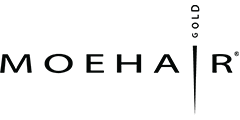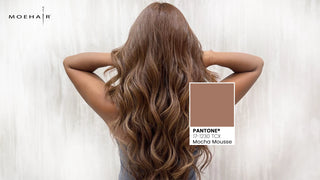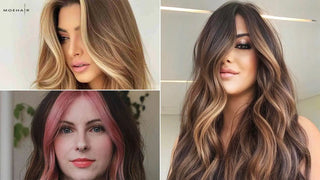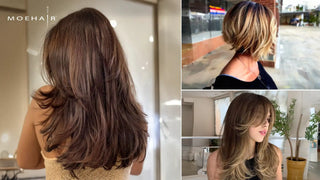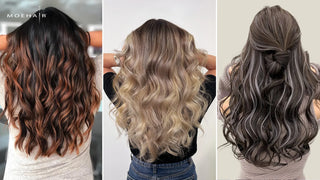 Table of contents
Table of contents
In most Native American cultures, hair is considered sacred, with the way it is styled or worn. It conveys stories of strength, wisdom, and connection to the Earth and ancestors. From flowing locks to braids and more, these hairstyles have a rich history that speaks volumes about cultural pride, resilience, and beauty. Ready to explore how these timeless styles are still inspiring the world today? Here’s a low-down of 10 Native American hairstyles that continue to turn heads and capture hearts.
Long Loose Hair

Straight, flowing strands are attributed to many Native American tribes. Theoretically, they symbolize strength, purity, and harmony with nature. Often left uncut, this Native American hairstyle reflects the spiritual connection between the individuals and their surroundings. Not going to lie, many tribes (still) consider long hair holy. It represents a person’s life force and identity, and cutting it is often done only during significant life events or mourning. Isn’t it intriguing?
Cornrow Braids

Did you know? Back then, braiding each other's hair was an act of love and bonding. Though cornrows are often associated with African cultures, they were also worn by some Native American tribes for practicality and as a form of expression. However, modern inspiration for this hairstyle can be drawn from celebrities like Kat Graham, Ruth Negga, and more. Cornrow braids offer a sleek and durable coiffure that’s always trendy and admirable.
Top Knot or Bun Style

High buns or top knots were frequently worn during ceremonies. Such hairdos are versatile, popular, and elegant—prominently seen on both men and women of Native American descent. Style it your way using a texturizing spray to add grip and volume. Then, make the bun or tie a knot and finish with a lightweight hairspray to hold it in place. Elevate the aura of your stunning Native American hairstyle with some hairpins and accessories.
The Mohawk

One of the most recognizable Native American hairstyles, the Mohawk features shaved sides with a strip of hair running down the center. This bold style originates from the Mohawk tribe. In fact, warriors often wore this hairstyle to intimidate enemies. If you’d like to create it today, use a strong-hold gel to sculpt and define the central section of your hair. Opt for a volumizing mousse for added height and texture—and that’s it!
Single Braid

The single braid, laid down the back, is a simple yet gorgeous style. And it’s not just a female Native American hairstyle; men also gracefully flaunt it. A staple for many tribes, it’s worn during daily activities and events. Accessories like beads and ribbons make this hairstyle minimalist yet embellishing. If you’re the one trying it now, just make sure you apply a detangling leave-in conditioner before braiding for a smoother finish.
Feather Adorned Hair

Feathers tend to play a significant role in Native American hairstyles. Women might weave small feathers into their braids, while men placed larger feathers upright in their strands or headpieces. The type of feather also carried meaning—for instance, eagle feathers symbolized strength and leadership, and were typically earned through acts of valor or devotion.
Double Braids

Two symmetrical braids, often adorned with beads, are a signature style among Native American women. Double braids top the list of female Native American hairstyles, symbolizing femininity and innocence. Notably, young girls and women adored them. Moreover, beads and other ornaments added personal flair and cultural identity to braids.
The Scalp Lock

Often worn by warriors of various tribes, the scalp lock features a single tuft of hair left at the crown. The rest of the head was either shaved or closely cropped. They mostly tied the locks with feathers or ribbons, symbolizing bravery, victories, and spiritual beliefs. Traditionally, the scalp lock could also represent readiness for battle. A feather for freedom, a bead for resilience, or a ribbon for connection to the Earth—there are many stories behind this coif.
Hair Wraps with Beads

This hairstyle involves sections of hair wrapped with colorful threads and, more commonly, decorated with beads. Most of these wraps are embraced as a form of self-expression and storytelling, with colors and patterns often representing tribal identities. Hair wraps are now popular as the easiest kids’ hairdos (P.S. they are minimal, fun, and on-the-go). If you want to try one of the female Native American hairstyles, this one won’t take more than 10 minutes.
Native American hairstyles are more than just a matter of aesthetics and trends. To us, they are a living testament to the resilience, creativity, and cultural richness of Indigenous people. As we draw inspiration from these timeless styles, it’s essential to honor their origins and appreciate the traditions that have carried them forward through generations. Let’s celebrate these hairstyles as symbols of heritage and strength, ensuring their legacy is preserved with the respect and admiration they deserve.
FAQs
Q1. Are Native American hairstyles worn by both men and women?
Yes, many Native American hairstyles, like long hair, single braids, and top knots, are worn by both men and women, with slight variations in style and adornments.
Q2. Can you style hair wraps with beads at home?
Absolutely! Hair wraps are an easy and creative way to style your hair. You can personalize this Native American hairstyle by using colorful threads and beads.
Q3. What does the Mohawk hairstyle signify?
The Mohawk hairstyle, originating from the Mohawk tribe, was historically worn by warriors to intimidate enemies. It represents courage, strength, and readiness for battle.
Q4. What do long hairstyles symbolize in Native American cultures?
Long hair often symbolizes strength, purity, and harmony with nature. It is considered sacred and represents an individual's life force and identity.
References
https://www.notesfromthefrontier.com/post/native-hair-traditions
https://www.britannica.com/topic/Native-American
https://www.essence.com/hair/braids/celebs-cornrows/#46878
How we reviewed this article:
Our experts continually monitor the fashion and beauty space, and we update our articles when new information becomes available.
-
Current Version
-
Jan 20, 2025
Written By -
Saloni Sachdeva is a lifestyle writer with 5+ years of experience in writing in the beauty and haircare industry.
Edited By -
Saima Ahmed with 8+ yrs of experience, specializes in crafting engaging content focused on Hair care, lifestyle, and beauty.
